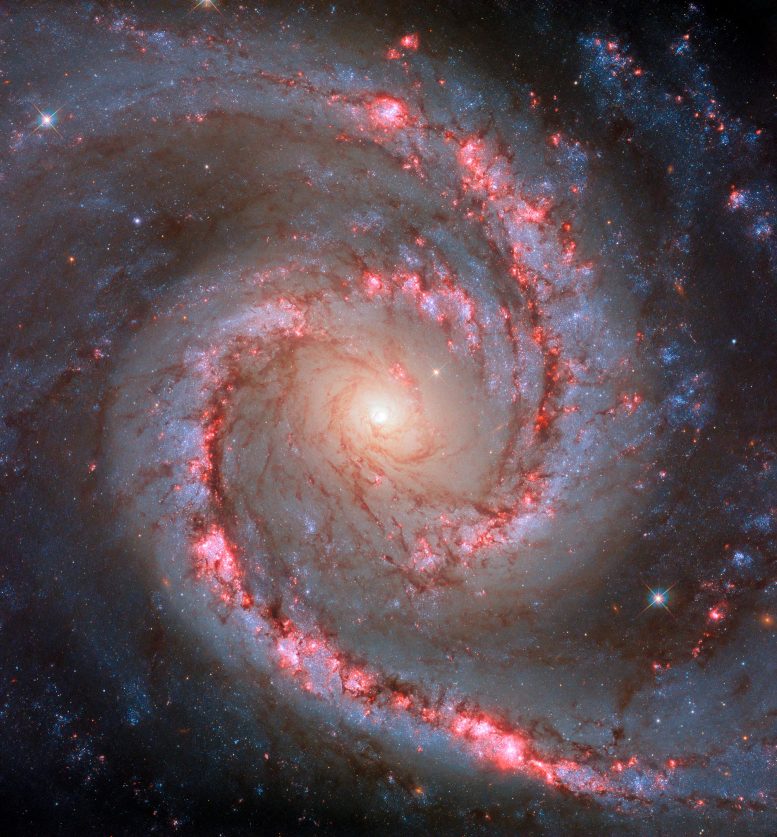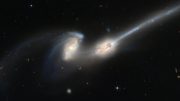
The Hubble Space Telescope captured this stunning image of NGC 1566, dubbed the ‘Spanish Dancer Galaxy’, a member of the Dorado galaxy group. Distinguishing members within such groups poses intricate challenges for astronomers. Credit: ESA/Hubble & NASA, D. Calzetti and the LEGUS team, R. Chandar
Captured by the Hubble Space Telescope, this vibrant and dynamic-looking image features the spiral galaxy NGC 1566, which is sometimes informally referred to as the ‘Spanish Dancer Galaxy’.
Like the subject of another recent Hubble Picture of the Week, NGC 1566 is a weakly-barred or intermediate spiral galaxy, meaning that it does not have either a clearly present or a clearly absent bar-shaped structure at its center. The galaxy owes its nickname to the vivid and dramatic swirling lines of its spiral arms, which could evoke the shapes and colors of a dancer’s moving form. NGC 1566 lies around 60 million light-years from Earth in the constellation Dorado, and is also a member of the Dorado galaxy group.
Understanding Galaxy Groups
Galaxy groups are assemblages of gravitationally bound galaxies. Groups differ from galaxy clusters in size and mass: galaxy clusters may contain hundreds of galaxies, whereas groups might contain several tens of galaxies. That said, there is not a precise delineation between the definition of a galaxy group and a galaxy cluster. Some astronomers have proposed that the definitions be sharpened up, with one suggestion that galaxy aggregations with less mass than 80 trillion Suns should qualify as galaxy groups.
Challenges in Identifying Galaxy Group Members
The Dorado group has had a fluctuating membership over the past few decades, with various scientific papers changing its list of constituent galaxies. As an example of why it is so challenging for astronomers to pin down members of groups such as the Dorado group, we can imagine a photograph of an adult human and a large oak tree.
We have foreknowledge of the approximate size of the person and the tree, so if we were to see a photo where the person appeared roughly the same size as the tree, then we would be able to guess that, in reality, the person was positioned much closer to the camera than the tree was, giving the false impression that they were the same size.
When working out members of a galaxy group, astronomers are not necessarily equipped with the knowledge of the size of the individual galaxies, and so have to work out whether galaxies really are relatively close together in space, or whether some of them are actually much closer or much further away. This has become easier with more sophisticated observation techniques, but still sometimes presents a challenge.









Be the first to comment on "Dancing With Stars: Hubble Captures the Enigmatic Beauty of the “Spanish Dancer Galaxy”"